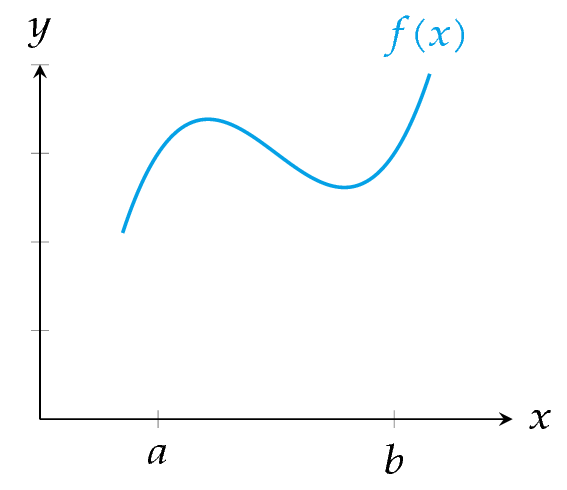Integral calculus
Antiderivative of a function
Example. The function
Roughly speaking, the calculus of antiderivatives is the reverse process of differentiation, and that is the reason for the name of antiderivative.
Indefinite integral of a function
As two functions that differs in a constant term have the same derivative, if
Definition - Indefinite integral. The indefinite integral of a function
Example. The indefinite integral of the function
Interpretation of the integral
We have seen in a previous chapter that the derivative of a function is the instantaneous rate of change of the function. Thus, if we know the instantaneous rate of change of the function at any point, we can compute the change of the function.
Example. What is the space covered by an free falling object?
Assume that the only force acting upon an object drop is gravity, with an acceleration of
And as the speed is the rate of change of the space covered by object during the fall, the antiderivative of the speed is the space covered by the object,
Thus, for instance, after 2 seconds, the covered space is
Linearity of integration
Given two integrable functions
This means that the integral of any linear combination of functions equals the same linear combination of the integrals of the functions.
Elementary integrals
Techniques of integration
Unfortunately, unlike differential calculus, the is not a foolproof procedure to compute the antiderivative of a function. However, there are some techniques that allow to integrate some types of functions. The most common methods of integration are
- Integration by parts
- Integration by reduction
- Integration by substitution
- Integration of rational functions
- Integration of trigonometric functions
Integration by parts
Theorem - Integration by parts. Given two differentiable functions
or, writing
From the rule for differentiating a product we have
and computing the integrals both sides we get
To apply this method we have to choose the functions
Example. To integrate
Integration by reduction
The reduction technique is used when we have to apply the integration by parts several times.
If we want to compute the antiderivative
Example. To compute
Thus, for instance, for
Integration by substitution
From the chain rule for differentiating the composition of two functions
we can make a variable change
Example. To compute the integral of
Finally, undoing the substitution we get
Integration of rational functions
Partial fractions decomposition
A rational function can be written as the sum of a polynomial (with an immediate antiderivative) plus a proper rational function, that is, a rational function in which the degree of the numerator is less than the degree of the denominator.
On the other hand, depending of the factorization of the denominator, a proper rational function can be expressed as a sum of simpler fractions of the following types
- Denominator with a single linear factor:
- Denominator with a linear factor repeated
- Denominator with a single quadratic factor:
- Denominator with a quadratic factor repeated
Antiderivatives of partial fractions
Using the linearity of integration, we can compute the antiderivative of a rational function from the antiderivative of these partial fractions
Integration of a rational function with a denominator with linear factors
Example. Consider the function
The factorization of the denominator is
and equating the numerators we get
Finally, integrating each partial fraction we have
Integration of a rational function with a denominator with simple quadratic factors
Example. Consider the function
In this case the denominator cannot be factorised as a product of linear factors, but we can write
so
Integration of trigonometric functions
Integration of
Example.
and making the substitution
Finally, undoing the substitution we have
Integration of
If
Example.
the first integral is of the same type and the second one of the previous type, so
Products of sines and cosines
The equalities
transform products in sums, simplifying the integration.
Example.
Rational functions of sines and cosines
If
Example.
Definite integral
Definition - Definite integral. Let

Theorem - First fundamental theorem of Calculus. If
Example. Given the function
Properties of the definite integral
Given two functions
-
-
-
-
-
Area calculation
Area between a positive function and the
If
measures the area between the graph of

Area between a negative function and the
If

Area between a function and the
In general, if

Area between two functions
If
